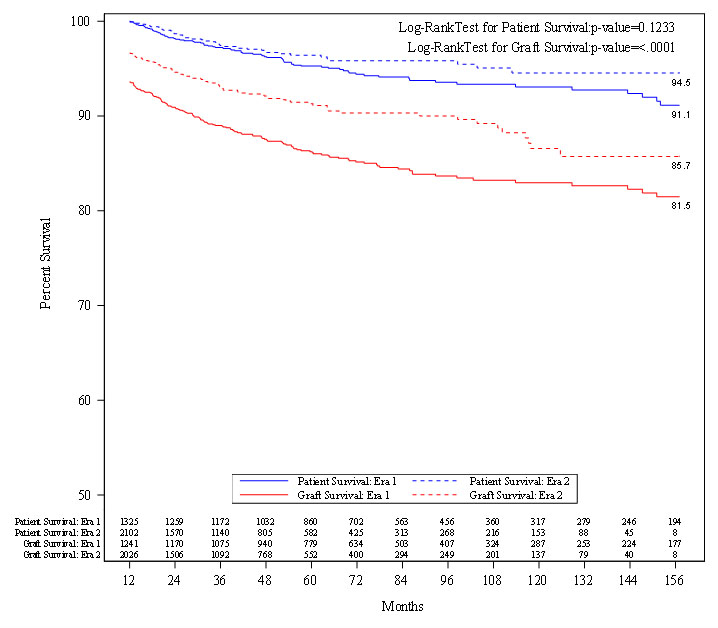Revisiting Late Graft Loss or Death in Pediatric Liver Transplantation Through Analysis of the SPLIT Database
1UPMC Children's Hospital of Pittsburgh, Pittsburgh, PA, 2C. S. Mott Children's Hospital, Ann Arbor, MI, 3Vanderbilt University School of Medicine, Nashville, TN, 4Children's Healthcare of Atlanta and Emory University School of Medicine, Attlanta, GA, 5The Emmes Company, Rockville, MD, 6University of Miami, Miami, FL
Meeting: 2022 American Transplant Congress
Abstract number: 1448
Keywords: Liver, Liver transplantation, Outcome
Topic: Clinical Science » Liver » 61 - Liver: Pediatrics
Session Information
Session Time: 7:00pm-8:00pm
 Presentation Time: 7:00pm-8:00pm
Presentation Time: 7:00pm-8:00pm
Location: Hynes Halls C & D
*Purpose: With advances in surgical techniques, medical management, and more equitable allocation systems, children who receive a liver transplant today can expect remarkable outcomes early after liver transplantation. However, beyond 1-year post-transplant, attrition rates have not improved.
*Methods: We interrogated two separate eras (era 1: 01/1995 – 06/2004 vs. era 2: 7/2004 – 3/2018) of the Society of Pediatric Liver Transplant (SPLIT) registry to explore the evolution and associated factors contributing to late graft loss and late mortality.
*Results: The fraction of long-term pediatric liver transplant recipients surviving after 1-year with their first graft significantly improved (85.7% vs 81.5%, p<0.0001, Figure 1). This improvement occurred despite significant changes in patient selection toward higher risk populations (p<0.001), and without notable improvement in peri-operative complications such as hepatic artery thrombosis (p=0.24) and early post-transplant re-operation (p=0.94) that have historically contributed to poor late-allograft outcomes. Improved outcomes were associated with changes in patient characteristics and peri-operative practices, which subsequently impacted both early post-liver transplant complications as well as other sequalae known to contribute to adverse events in long-term pediatric liver transplant recipients.
*Conclusions: In conclusion, despite significant changes in patient selection toward higher risk populations, and without notable improvement in several peri-operative complications known to contribute to poor late-allograft outcomes, significant improvements in late graft loss and a trend toward improvement in late mortality was seen in a more recent cohort of children receiving liver transplant.
To cite this abstract in AMA style:
Squires JE, Bilhartz J, Soltys K, Hafberg E, Mazariegos GV, Gupta N, Anand R, Anderson SG, Miloh T. Revisiting Late Graft Loss or Death in Pediatric Liver Transplantation Through Analysis of the SPLIT Database [abstract]. Am J Transplant. 2022; 22 (suppl 3). https://atcmeetingabstracts.com/abstract/revisiting-late-graft-loss-or-death-in-pediatric-liver-transplantation-through-analysis-of-the-split-database/. Accessed December 28, 2025.« Back to 2022 American Transplant Congress

